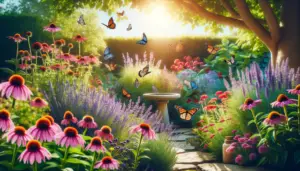Orchids are one of the most popular and sought-after plants in the world. They are known for their unique beauty and require proper care to keep them thriving. One of the most important aspects of orchid care is proper watering. In this blog post, we will provide insights into the importance of proper watering, the different types of orchids and their water requirements, and tips for watering orchids. We will also cover the signs of overwatering and underwatering and explain how to identify them. Our goal is to help you keep your orchids healthy and beautiful.
Understanding Orchid Water Requirements
Orchids are native to tropical and subtropical regions and are adapted to various environmental conditions. They grow on trees, rocks, and other surfaces, absorbing water and nutrients from the air and rain. Understanding their natural habitat is crucial for understanding their water requirements.
Different types of orchids have unique water requirements. Some orchids, such as the Phalaenopsis or moth orchid, prefer to be kept slightly moist and require more frequent watering. On the other hand, orchids such as the Cattleya require a period of dryness between waterings. The Dendrobium orchid is another example that requires a dry period between waterings.
It is essential to research the specific water needs of your orchid species to ensure they receive the proper care. Overwatering or underwatering can lead to root rot, which is the most common cause of orchid death. Therefore, it is crucial to understand the water requirements of your orchid species to prevent overwatering or underwatering and to keep them thriving.
Signs of Overwatering and Underwatering
Overwatering and underwatering are common mistakes when it comes to orchid care. Both can lead to root rot, which is the most common cause of orchid death. Signs of overwatering include yellowing leaves, soft and mushy roots, and a foul odor. In contrast, underwatering causes wilted and wrinkled leaves, dry potting mix, and brittle roots.
It is essential to identify these signs to prevent overwatering or underwatering and adjust your watering schedule accordingly. Additionally, it is crucial to avoid common mistakes such as watering orchids on a set schedule rather than based on their specific needs or leaving standing water in the pot.
By understanding the signs of overwatering and underwatering, you can adjust your orchid watering routine and prevent root rot. In the next section, we will discuss tips and techniques for properly watering orchids.
Orchid Watering Tips and Techniques
Proper orchid watering technique is crucial for maintaining healthy orchids and preventing root rot. Here are some tips and techniques for watering orchids:
Watering Frequency
Orchids need water when their potting mix is almost dry. This can vary depending on the species, potting mix, and environmental factors such as temperature and humidity. To determine the right watering frequency, insert your finger into the potting mix up to the second knuckle. If it feels dry, it’s time to water.
Watering Method
There are several methods for watering orchids, but the most common are top watering and bottom watering. Top watering involves pouring water directly onto the potting mix until water runs out of the drainage holes at the bottom of the pot. Bottom watering involves placing the pot in a container of water and allowing the potting mix to absorb water through the drainage holes.
Water Quality
Orchids are sensitive to chemicals and minerals in water. Therefore, it is best to use distilled or rainwater to water orchids. If you must use tap water, allow it to sit for 24 hours before use to allow the chlorine to dissipate.
Drainage
Proper drainage is essential for preventing root rot. Ensure that your orchid pot has sufficient drainage holes and that excess water flows out of the pot.
Humidity
Orchids thrive in high humidity environments. To increase humidity levels, place a tray of water near the orchids, use a humidifier, or mist the leaves regularly.
By following these tips and techniques, you can ensure that your orchids receive the proper watering and thrive. In the next section, we will discuss the importance of creating a watering schedule for your orchids.
Orchid Watering Schedule
Creating a watering schedule for your orchids is essential to ensure that they receive the proper amount of water and thrive. While the frequency of watering will vary depending on the type of orchid and environmental factors, such as temperature and humidity, there are some general guidelines that can be followed.
Consider the Type of Orchid
Different types of orchids have varying water requirements. For example, epiphytic orchids, which grow on other plants, require less water than terrestrial orchids, which grow in soil. Research the specific water needs of your orchid to determine the best watering schedule.
Consider Environmental Factors
Environmental factors, such as temperature and humidity, can impact the frequency of watering. In general, orchids require more water in warmer temperatures and higher humidity levels.
Check the Potting Mix
Before watering, check the potting mix to ensure that it has dried out. Insert your finger up to the second knuckle, and if it feels dry, it’s time to water.
Watering Frequency
In general, orchids should be watered once a week. However, this frequency may need to be adjusted based on the type of orchid and environmental factors. Monitor the orchid for signs of overwatering or underwatering and adjust the watering schedule as needed.
Watering Method
The watering method used will also impact the frequency of watering. Top watering may require more frequent watering than bottom watering, as excess water can evaporate more quickly.
By following these guidelines and creating a watering schedule specifically tailored to your orchids, you can ensure that they receive the proper amount of water and thrive. In the next section, we will discuss the importance of humidity in orchid care and watering.
Humidity and Orchid Watering
Orchids thrive in environments with high humidity levels, as they absorb moisture through their leaves and roots. In order to ensure proper orchid watering, it’s important to maintain the right humidity levels.
To increase humidity levels, consider using a humidifier or placing a tray of pebbles filled with water near your orchids. Make sure the water level does not touch the bottom of the pot, as this can lead to overwatering. Misting your orchids with water can also help increase humidity levels.
On the other hand, if the environment is too humid, it’s important to adjust your watering schedule accordingly. In high humidity environments, orchids may require less frequent watering as they absorb moisture from the air.
It’s important to monitor the humidity levels in your orchid’s environment and adjust your watering schedule as needed. By maintaining the proper humidity levels, you can ensure that your orchids receive the right amount of moisture for optimal growth and health.
Best Practices for Orchid Care
Proper orchid care goes beyond just watering. In order to ensure your orchids thrive, it’s important to follow some best practices. Here are some tips to help you care for your orchids.
Provide the Right Amount of Light
Orchids require a balance of light and shade. Make sure they receive enough light, but not direct sunlight.
Use the Right Potting Mix
Orchids require a well-draining potting mix that allows air to circulate around the roots. Avoid using regular potting soil.
Fertilize properly
Orchids require specific fertilizers that are high in nitrogen during the growing season and low in nitrogen during the dormant season.
Repot When Necessary
Orchids should be repotted every 1-2 years, or when the potting mix breaks down and becomes compacted.
Watch for pests and diseases: Common orchid pests include mealybugs, spider mites, and scale. Look for signs of pests and diseases regularly and treat them promptly.
By following these best practices and incorporating proper watering techniques, you can ensure your orchids thrive and provide you with beautiful blooms for years to come. If you encounter any issues with your orchids, don’t hesitate to consult additional resources or seek advice from a professional.
Conclusion
In conclusion, proper orchid watering is crucial for the optimal growth and health of these beautiful plants. By understanding orchid water requirements, signs of overwatering and underwatering, and different watering techniques, you can ensure your orchids thrive. It’s also important to have a consistent watering schedule and adjust it based on environmental factors. Additionally, following best practices for orchid care and promptly addressing any issues can help your orchids flourish. Remember, with a little bit of knowledge and effort, you can enjoy stunning orchid blooms for years to come.








